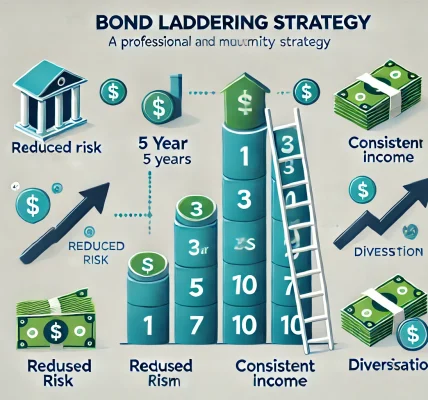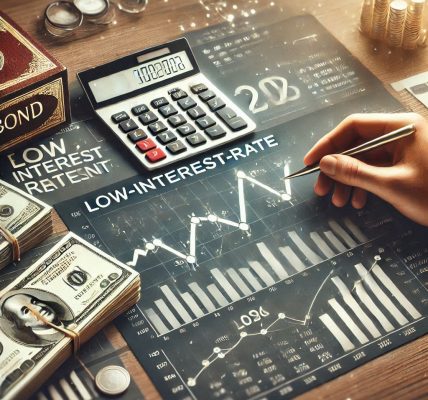In today’s dynamic financial landscape, investors are constantly on the lookout for instruments that offer both stable returns and growth potential. One such hybrid investment that combines the characteristics of bonds and stocks is the convertible bond. Offering the security of fixed-income investments and the upside of equity appreciation, convertible bonds present a unique opportunity for investors seeking balanced risk and reward.
In this blog, we will explore what convertible bonds are, how they work, their advantages and risks, and whether they are a worthwhile addition to your investment portfolio.
📚 What Are Convertible Bonds?
A convertible bond is a type of corporate bond that gives the bondholder the option to convert the bond into a predetermined number of shares of the issuing company’s stock. Essentially, it blends the characteristics of traditional bonds and equity, offering regular interest payments along with the potential to benefit from stock price appreciation.
Key Characteristics:
- Fixed Interest Payments: Like regular bonds, convertible bonds pay periodic interest (coupons).
- Conversion Option: Investors can convert the bond into equity shares at a predefined conversion ratio.
- Maturity Date: If not converted, the bond is repaid at face value upon maturity.
🔍 How Do Convertible Bonds Work?
✅ 1. Issuance and Interest Payments
When a company issues convertible bonds, it promises to pay a fixed interest rate (coupon) to bondholders until maturity. These bonds often carry lower interest rates than traditional bonds because of the potential for equity conversion.
✅ 2. Conversion Feature
The conversion option allows bondholders to convert their bonds into company shares at a predetermined conversion price and ratio. If the company’s stock price rises significantly, converting the bond into shares can result in a higher return than holding the bond until maturity.
- Conversion Ratio: Determines how many shares a bondholder receives upon conversion.
- Conversion Price: The price at which the bond can be converted into shares.
Example:
A bond with a face value of $1,000 and a conversion ratio of 50 means the investor receives 50 shares of stock if they choose to convert. If the stock price rises above $20 ($1,000 ÷ 50), the investor may profit by converting the bond.
✅ 3. Maturity and Redemption
If the bondholder does not convert the bond into shares, they receive the original principal amount (face value) at maturity. This feature offers downside protection to the investor, as they retain the bond’s value even if the stock price underperforms.
📈 Types of Convertible Bonds
✅ 1. Vanilla Convertible Bonds
These bonds offer a straightforward conversion option with a fixed ratio and conversion price.
✅ 2. Mandatory Convertible Bonds
These bonds automatically convert into shares at maturity, regardless of the stock price.
✅ 3. Reverse Convertible Bonds
These bonds provide higher coupon payments but require investors to accept stock at a predetermined price if the stock price falls below a certain level.
✅ 4. Contingent Convertible Bonds (CoCos)
Commonly used by financial institutions, these bonds automatically convert into equity if certain financial thresholds are met, often during times of financial distress.
🎯 Benefits of Investing in Convertible Bonds
📊 1. Fixed Income with Equity Upside
Convertible bonds provide regular interest payments, ensuring a stable income stream, while offering the potential to convert into equity and benefit from stock price appreciation.
📉 2. Downside Protection
In case the company’s stock price does not perform well, investors still receive their original principal upon maturity, limiting potential losses.
💸 3. Diversification
Including convertible bonds in a portfolio adds a hybrid asset class that reduces overall portfolio volatility by balancing equity and fixed-income exposure.
🚀 4. Lower Default Risk
Convertible bonds are typically less risky than stocks, as they rank higher in the capital structure, ensuring repayment of principal before shareholders in case of liquidation.
📈 5. Potential for Higher Returns
If the issuing company’s stock performs well, bondholders can convert their bonds into shares, unlocking potentially higher returns than traditional fixed-income investments.
⚠️ Risks and Drawbacks of Convertible Bonds
📉 1. Lower Yield Compared to Traditional Bonds
Due to the added equity conversion feature, convertible bonds often pay lower interest rates than traditional corporate bonds, which may impact income-focused investors.
📊 2. Equity Market Risk
While convertible bonds provide downside protection, they expose investors to stock market volatility if they choose to convert the bond into shares.
🔁 3. Dilution Risk
If a large number of convertible bonds are converted into shares, it can dilute the value of existing shares, impacting current shareholders negatively.
⚠️ 4. Call Risk
Some convertible bonds come with a call option, allowing the issuer to redeem the bond before maturity if certain conditions are met. This can limit the upside potential for bondholders.
📊 How to Evaluate Convertible Bonds
✅ 1. Conversion Premium
The conversion premium measures how much higher the bond’s price is compared to the value of the underlying shares. A lower conversion premium indicates a better opportunity for conversion.
✅ 2. Credit Quality of Issuer
Evaluate the issuing company’s credit rating and financial health to assess the likelihood of receiving timely interest payments and principal repayment.
✅ 3. Stock Performance Potential
Analyze the company’s growth prospects and stock price trajectory to determine the likelihood of benefiting from equity conversion.
✅ 4. Yield to Maturity (YTM)
Assess the bond’s yield to maturity to ensure that it aligns with your desired risk-return profile.
📊 Convertible Bonds vs. Traditional Bonds: Key Differences
| Feature | Convertible Bonds | Traditional Bonds |
|---|---|---|
| Interest Payments | Lower than traditional bonds | Higher fixed coupon payments |
| Equity Conversion | Yes, with conversion option | No equity conversion |
| Principal Protection | Yes, if not converted | Full principal repayment |
| Risk Level | Moderate (lower than stocks) | Low to moderate |
| Return Potential | Higher, if stock price rises | Fixed return |
🧩 When Should You Consider Convertible Bonds?
🎯 1. When You Expect Stock Price Appreciation
If you anticipate that the issuing company’s stock will perform well, convertible bonds offer the potential to capture equity-like returns.
🎯 2. When You Seek Moderate Risk with Upside Potential
Convertible bonds provide a balanced approach for investors seeking moderate risk with the potential for capital appreciation.
🎯 3. When You Need Fixed Income with Growth Opportunities
For income-oriented investors who want to diversify their portfolio with exposure to potential stock gains, convertible bonds provide a dual benefit.
❗️ When Convertible Bonds May Not Be Ideal
⚠️ 1. If You Prefer Higher Yields
Traditional bonds may be a better fit if you prioritize higher fixed income over potential equity conversion.
⚠️ 2. If Stock Market Volatility Concerns You
If you are a risk-averse investor who prefers to avoid stock market exposure, convertible bonds may not be suitable.
💡 How to Mitigate Risks When Investing in Convertible Bonds
- Diversify Your Portfolio:
Avoid over-reliance on convertible bonds by balancing exposure across asset classes. - Analyze Conversion Premium:
Opt for bonds with a lower conversion premium to enhance the likelihood of profitable conversion. - Monitor Company Fundamentals:
Keep an eye on the issuing company’s financial health and stock performance to make informed conversion decisions. - Consider Call Provisions:
Evaluate whether the bond can be called by the issuer before maturity, limiting potential gains.
📊 Convertible Bonds vs. Preferred Stocks: A Comparative Overview
| Feature | Convertible Bonds | Preferred Stocks |
|---|---|---|
| Income Payments | Fixed coupons | Fixed dividends |
| Conversion Feature | Converts into common shares | No conversion feature |
| Risk Level | Moderate | Low to moderate |
| Upside Potential | Higher with stock appreciation | Limited upside potential |
| Voting Rights | No voting rights | No voting rights |
🎨 Final Verdict: Are Convertible Bonds Worth Adding to Your Portfolio?
Convertible bonds provide a unique investment opportunity that blends the safety of bonds with the growth potential of equities. By offering downside protection through fixed-interest payments and the upside of equity appreciation, they cater to investors seeking a hybrid investment vehicle. While they may not suit highly conservative investors or those seeking high fixed yields, convertible bonds can play a valuable role in a well-diversified portfolio.
For investors who want to hedge against market volatility while participating in equity growth, convertible bonds can be an attractive option to achieve both stability and higher returns.



